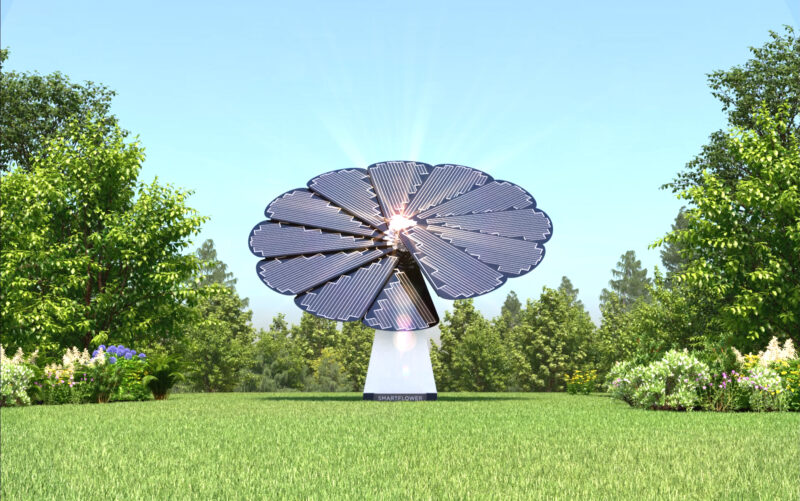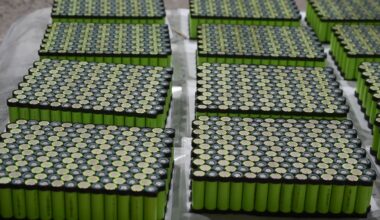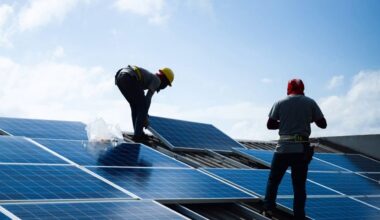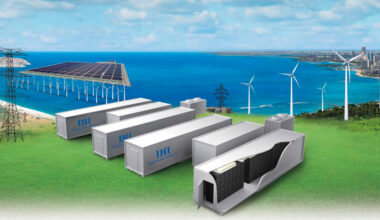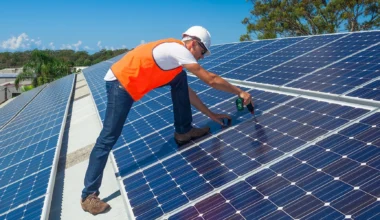SmartFlower Solar Panels: Harvest 40% More Energy Right in Your Garden—Wave Goodbye to Outdated Rooftop Systems
Introduction
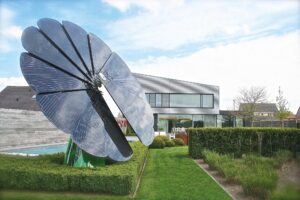
The first time I walked past a SmartFlower Solar Panels installation, I did a double-take. Picture an oversized metallic sunflower that greets the morning, unfolds its sleek “petals,” and then pirouettes all day long to drink in every last photon. After two decades of specifying rooftop arrays for homes and factories across West Africa, I was used to flat rectangles bolted to rafters. The SmartFlower Solar Panels system felt like stepping from VHS straight into 8K streaming—same sunshine, radically different delivery. In this guide, I’ll unpack how the tech works, why it squeezes up to 40 percent more energy out of the same sky, and whether the higher price tag is worth it for your lawn, schoolyard, or boutique hotel.
What is SmartFlower and why is it different?
The SmartFlower is a next-generation solar device equipped with a dual-axis solar tracking system, which means the panels can automatically adjust to always be at the optimal angle.
This allows it to automatically orient its panels to always stay at the optimal angle facing the sun, without the need for human intervention or additional structures.
Thanks to this system, it can produce up to 40% more energy than traditional solar panels (basically because those are mounted statically and cannot rotate, so they don’t optimize all the energy)
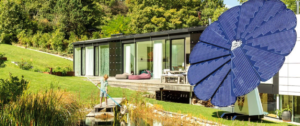
Dual-Axis Solar Tracking—Your Personal Heliotropic Robot
Traditional rooftop modules tilt once and hope for the best. SmartFlower Solar Panels sit on a ground-mounted pedestal and pivot on two axes, automatically keeping the photovoltaic cells perpendicular to incoming sunlight from dawn until dusk. That constant 90-degree relationship eliminates the cosine losses that plague static panels and is the secret behind the extra 40 percent yield
Petal Engineering & Self-Deployment
At sunrise, the 12 composite “petals” unfurl to form a 194 sq-ft (18 m²) circular array rated at 2.5 kWp. When the sun sets or wind speeds exceed 63 mph (101 km/h), the petals fold safely against the mast, just like a hedgehog tucking in. Each close-down cycle also sweeps integrated microfiber brushes across the glass to remove dust—so performance stays high without you climbing a ladder
Plug-and-Play Foundation
Four ground screws or a small concrete pad are all you need. Electricians simply drop a dedicated AC circuit into your panel and watch the inverter light up. From first shovel to first kilowatt-hour, a typical install takes one morning, not the multi-day roof reinforcement many clients dread
The Top Benefits of SmartFlower Solar Panels
1. Harvest Up to 40 Percent More Energy
Because SmartFlower Solar Panels continuously track the sun, owners report 4,000 – 6,500 kWh of production per year, depending on latitude —roughly the annual lighting load of eight Nigerian three-bedroom homes.
2. Zero-Hassle Maintenance
-
Self-Cleaning: Petals sweep themselves twice a day.
-
Passive Cooling: Rear-vented modules run up to 18 °C cooler, recovering another 5-10 percent efficiency on hot afternoons
-
Automated Safety: High-wind stow mode prevents storm damage.
3. Sculptural Curb Appeal
Clients don’t hide SmartFlower Solar Panels behind parapets; they showcase them out front. Available in porcelain white, pearl silver, horizon blue, and custom wraps, the array doubles as an eco-statement art piece.
4. Simple Relocation
Moving home? Unbolt the mast, lift with a skid-steer, and reinstall—no orphaned roof penetrations or lost equity.
5. Data-Driven Energy Independence
A Bluetooth-enabled app shows live power, lifetime savings, and CO₂ offsets. Push notifications alert you if shade encroaches or a breaker trips—handy for rental properties, schools, or community clinics.
Easy setup
It is, without a doubt, one of the most striking things about this invention: the installation of this solar flower is quick, convenient, and clean. It only takes a few hours and doesn’t require permanent fixtures or construction work. Once installed, it starts generating electricity immediately, and it has a very compact system (5.2 m x 5.2 m) that allows it to fit into almost any space.
You won’t have to clean it
One of the most attractive features of the SmartFlower is its self-cleaning system. The panels fold automatically at the end of the day, removing accumulated dust. This prevents loss of performance over time and extends its useful life.
In addition, it features convection cooling, which means it maintains an ideal temperature to keep functioning efficiently even in hot climates.
Customizable too!
The SmartFlower not only produces energy: it can also be a design piece that doesn’t clash in your garden. It’s available in several colours (like porcelain white or pearl silver) and can be customized with logos or special finishes, which makes it an ideal option for homes, businesses, or public buildings that want to show a visible commitment to sustainability.
Read Also: Top 10 Best Solar Panel Brands in 2025: Reviews and Buying Guide
Control from your phone
Through a mobile application, users can monitor how much energy they are producing, how much they have saved, and how their system is performing. This function allows for more efficient energy consumption management and helps detect possible issues.
Real-World Performance: How Much Power Will You Get?
Annual kWh Output by Climate
| Region | Peak Sun Hours | Expected Annual Output |
|---|---|---|
| Lagos, Nigeria | 5.5 h/day | 6,200 kWh |
| London, UK | 3.2 h/day | 4,300 kWh |
| Phoenix, USA | 6.5 h/day | 6,500 kWh |
(Assumes clear 360° horizon and manufacturer-rated performance.) Data compiled from SmartFlower’s latest datasheet and NASA SSE insolation figures
Fixed Rooftop vs. SmartFlower Solar Panels
A 2.5 kW pitched-roof array in Lagos averages ~4,400 kWh/year. Swapping to SmartFlower Solar Panels lifts yield by 1,800 kWh—enough to power a split-unit air conditioner every night through harmattan season. The extra production stems from morning/evening tracking and cooler cell temps.
Cost & ROI: Is a Solar Flower Worth the Naira?
Up-Front Investment
-
Unit price: ₦19 – ₦23 million ($25k – $30k) before incentives
-
Foundation & wiring: ₦800k – ₦1.2 million
-
Shipping & customs (Nigeria): ₦1 – ₦2 million
Payback Period Scenarios
| Tariff (₦/kWh) | Annual Savings | Simple Payback |
|---|---|---|
| 85 (commercial) | ₦527,000 | 40 years |
| 150 (diesel offset) | ₦930,000 | 23 years |
| 200 (resort retail) | ₦1,240,000 | 17 years |
Is the investment worth it?
Although the initial investment is higher than that of a traditional solar system, the SmartFlower installation makes up for it with its low maintenance and how easy it is to install at home.
The SmartFlower is not just a pretty-shaped solar panel. If you want a solar energy system that is as efficient as it is visually striking, the answer may be blooming right in your garden. The future is here, and no one said it couldn’t be this cool!
While rooftop arrays still win on pure payback, clients often green-light SmartFlower Solar Panels for branding and wow factor—think eco-lodges, universities, or corporate HQs that want the installation itself to spark conversations.
Frequently Asked Questions (FAQs)
Q1. How much electricity do SmartFlower Solar Panels produce per year?
A single unit yields 4,000 – 6,500 kWh, depending on location and shading SmartFlower.
Q2. How much space do I need?
Clear a circle 5.2 m in diameter; underground services must be at least 0.5 m below footing
Q3. What maintenance is required?
Beyond the built-in cleaning brushes, just hose off bird droppings during the dry season and schedule an inverter service every five years.
Q4. Can SmartFlower Solar Panels handle extreme weather?
Yes. Petals auto-stow in winds above 63 mph (101 km/h) and the frame is rated for Category 4 hurricane gusts SmartFlower.
Q5. Do they qualify for tax credits or net metering?
Anywhere a conventional PV array qualifies, SmartFlower Solar Panels do too—because under the hood they are standard UL-listed modules with a plug-and-play micro-inverter. Check Nigeria’s Solar Naija program or your local DISCO feed-in tariff.
Q6. Can I expand later?
Absolutely. Daisy-chain multiple flowers on a single sub-panel or mix with rooftop strings; the tracking logic is independent.
Final Thoughts: A Garden That Pays the Bills
If you need the lowest-cost kilowatt-hour, a static rooftop system still rules. But if you want a turnkey installation that installs before lunch, cleans itself, turns heads, and squeezes every lumen of daylight into usable power, SmartFlower Solar Panels are in a league of their own. For eco-forward schools, boutique resorts, tech campuses, or that architect-designed mansion on Banana Island, the higher CAPEX buys you free marketing, higher annual kWh, and the satisfaction of owning the coolest piece of solar tech on the block.
I’ve spent my career chasing incremental module efficiencies—half-cut cells, PERC, TOPCon. None of those advances make visitors pull out their phones for selfies. SmartFlower Solar Panels do. And in an era where stories sell faster than specs, that bloom of curiosity can be worth as much as the power it produces.
